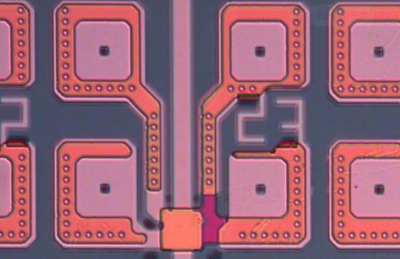How Novel Materials are Revolutionizing the Performance of High - Tech Devices
Release Date:2023/12/27 14:28:34
In the dynamic world of technology, the relentless pursuit of miniaturization is revolutionizing the way we design, build, and interact with tech gadgets. Miniaturized electronic components, the unsung heroes behind the scenes, are enabling unprecedented levels of functionality, portability, and integration in devices that have become an integral part of our daily lives.
One of the most significant areas where miniaturization is making a profound impact is in the realm of semiconductor manufacturing. The continuous shrinking of transistors, the fundamental building blocks of microchips, has been the driving force behind the exponential growth of computing power over the past few decades. Today, leading - edge semiconductor fabs are producing chips with transistors as small as 2 nanometers, packing billions of these tiny components onto a single chip. This miniaturization not only increases processing speed and reduces power consumption but also allows for the creation of more compact and energy - efficient devices, from smartphones and laptops to data centers and supercomputers.

Another area where micro - sized components are reshaping tech gadgets is in the field of sensors. Miniature sensors, such as MEMS (Micro - Electro - Mechanical Systems) sensors, are now being integrated into a wide range of devices, from wearables and fitness trackers to automotive and industrial applications. These sensors can detect and measure various physical quantities, such as motion, pressure, temperature, and humidity, with high precision and accuracy. For example, in a smartwatch, a MEMS accelerometer and gyroscope can track the wearer's movement and activity levels, while a heart - rate sensor can monitor their cardiovascular health. In the automotive industry, miniaturized sensors are used for applications such as tire pressure monitoring, collision detection, and autonomous driving.
The rise of 5G technology is also closely intertwined with the miniaturization of electronic components. 5G networks require a large number of small - cell base stations to provide high - speed, low - latency connectivity. These small - cell base stations are designed to be compact and energy - efficient, and they rely on miniaturized components, such as antennas, power amplifiers, and radio frequency (RF) modules. The miniaturization of these components not only reduces the size and cost of the base stations but also enables them to be deployed more easily in urban environments, where space is at a premium.
However, the race for miniaturization is not without its challenges. As components become smaller and more densely packed, issues such as heat dissipation, signal interference, and manufacturing yield become more critical. To overcome these challenges, researchers and engineers are developing new materials, manufacturing techniques, and design methodologies. For example, the use of advanced packaging technologies, such as 3D - IC packaging and fan - out wafer - level packaging, can help to improve heat dissipation and reduce signal interference. At the same time, the development of new materials, such as graphene and carbon nanotubes, holds great promise for further miniaturization and performance improvement.
In conclusion, the miniaturization of electronic components is a continuous and evolving process that is reshaping the future of technology. As we continue to push the boundaries of miniaturization, we can expect to see even more innovative and powerful tech gadgets in the coming years. From smartphones and wearables to autonomous vehicles and the Internet of Things, micro - sized wonders will continue to play a crucial role in transforming the way we live, work, and communicate.

